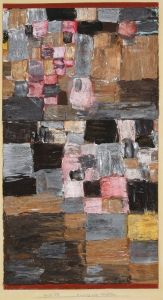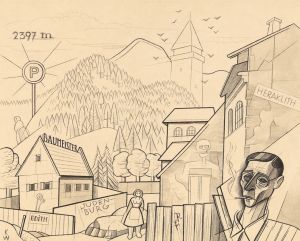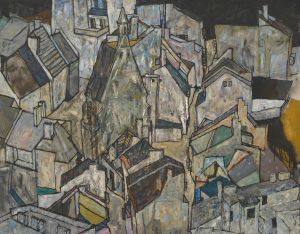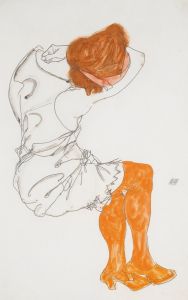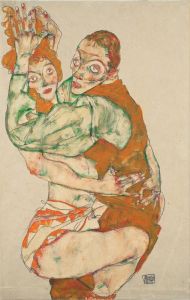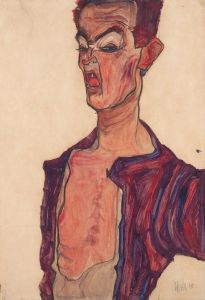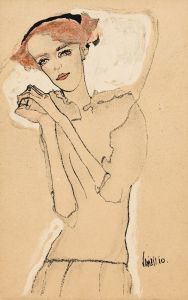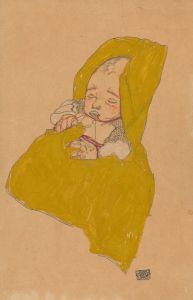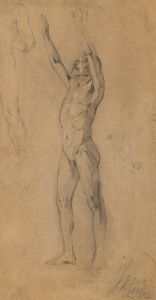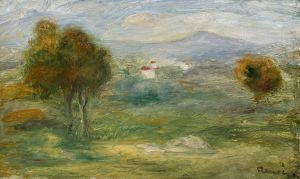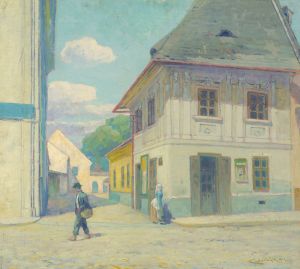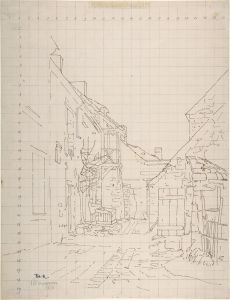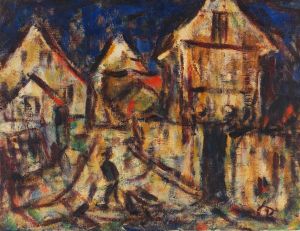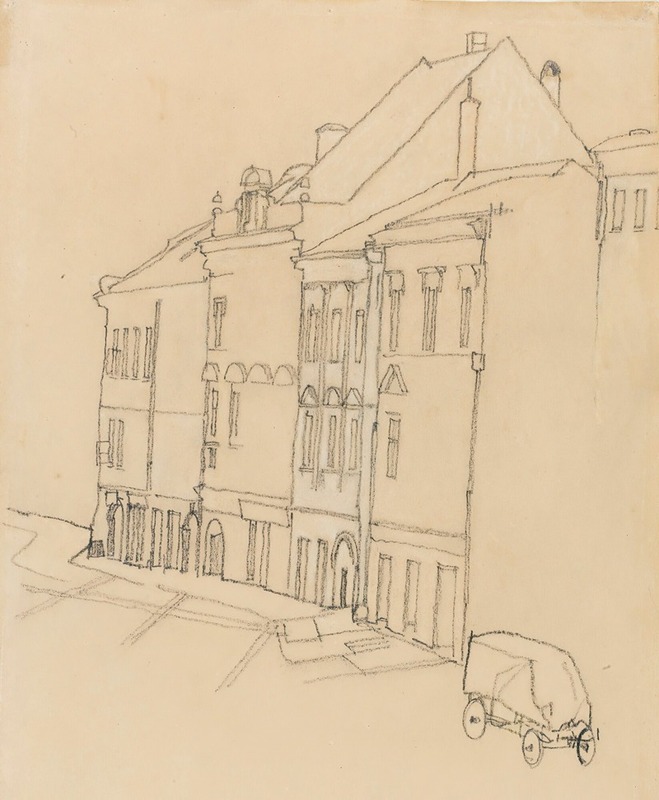
HÄUSER IN KRUMAU
A hand-painted replica of Egon Schiele’s masterpiece HÄUSER IN KRUMAU, meticulously crafted by professional artists to capture the true essence of the original. Each piece is created with museum-quality canvas and rare mineral pigments, carefully painted by experienced artists with delicate brushstrokes and rich, layered colors to perfectly recreate the texture of the original artwork. Unlike machine-printed reproductions, this hand-painted version brings the painting to life, infused with the artist’s emotions and skill in every stroke. Whether for personal collection or home decoration, it instantly elevates the artistic atmosphere of any space.
Egon Schiele, an Austrian painter known for his distinctive style and contribution to early 20th-century art, created the painting "Häuser in Krumau" (Houses in Krumau) in 1914. This work is one of Schiele's notable pieces that captures the essence of the town of Krumau, now known as Český Krumlov, located in the Czech Republic. Schiele had a personal connection to this town, as his mother was born there, and he visited it several times during his life. The town's medieval architecture and picturesque landscapes provided a rich source of inspiration for his work.
"Häuser in Krumau" is a landscape painting that reflects Schiele's unique approach to form and color. The painting depicts a cluster of houses in Krumau, characterized by their angular shapes and the artist's use of bold, expressive lines. Schiele's style often involved a departure from traditional perspectives, and in this painting, he employs a somewhat distorted and flattened perspective that emphasizes the geometric forms of the buildings. This technique contributes to the painting's dynamic composition, drawing the viewer's attention to the interplay of shapes and colors.
The color palette in "Häuser in Krumau" is notable for its earthy tones, with shades of brown, ochre, and green dominating the scene. Schiele's use of color is both vivid and restrained, creating a sense of harmony and tension within the composition. The painting's surface is marked by visible brushstrokes, adding texture and depth to the work. This textural quality is a hallmark of Schiele's painting technique, which often involved layering colors to achieve a rich, tactile effect.
Schiele's depiction of Krumau in this painting is not merely a representation of the town's physical appearance but also an exploration of its emotional and psychological resonance. The angularity and distortion present in the work suggest a sense of unease and tension, which is a recurring theme in Schiele's oeuvre. His art frequently delves into themes of existential angst and the complexities of human experience, and "Häuser in Krumau" can be seen as an extension of these themes into the realm of landscape painting.
Egon Schiele's work, including "Häuser in Krumau," is often associated with the Expressionist movement, although his style is distinct and personal. Expressionism, which emerged in the early 20th century, is characterized by its focus on representing emotional experiences rather than physical reality. Schiele's paintings, with their emphasis on psychological depth and emotional intensity, align with the core principles of this movement.
During his lifetime, Schiele's work was both celebrated and controversial. His bold approach to form and subject matter challenged conventional norms and often provoked strong reactions from the public and critics alike. Despite this, he gained recognition as a leading figure in Austrian art, and his influence extended beyond his immediate circle to impact the broader trajectory of modern art.
Today, "Häuser in Krumau" is regarded as an important example of Schiele's landscape painting and is housed in the Leopold Museum in Vienna, Austria. The museum holds one of the largest collections of Schiele's work, providing insight into his artistic development and the themes that permeated his career. Through paintings like "Häuser in Krumau," Egon Schiele continues to be celebrated for his innovative contributions to art and his ability to convey profound emotional truths through his work.






